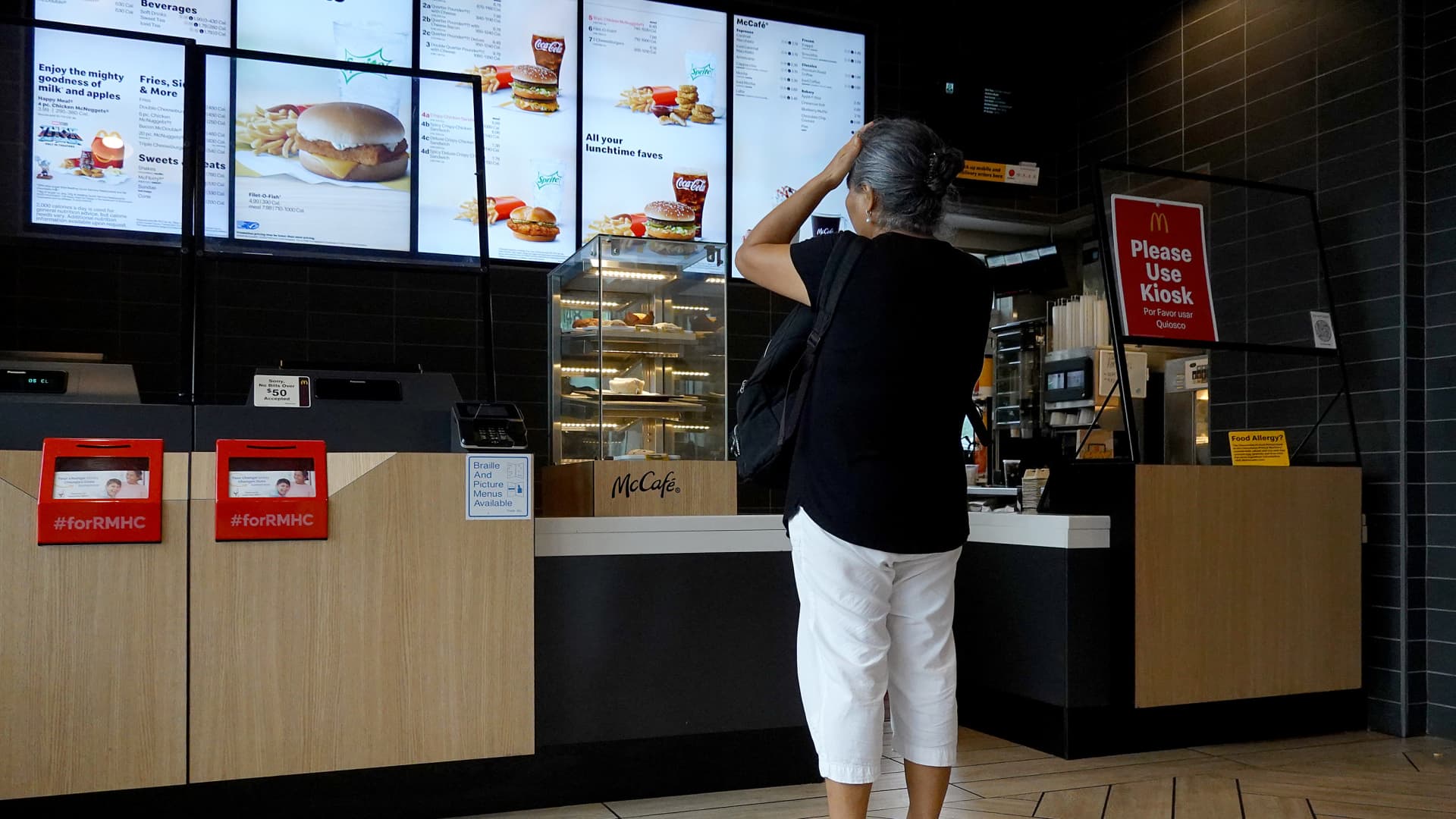Fast-food chains are playing up the value of their burgers, pizzas and tacos as inflation squeezes budgets — but expect higher prices, skimpier portions and more deals enticing people to sign up for rewards programs as companies rethink their value strategies.
Citing rising costs, Domino’s Pizza earlier this year raised the price of its Mix & Match delivery deal from $5.99 to $6.99, and made its $7.99 national carry-out offer available only for digital orders. Burger King removed the Whopper from its value menu and trimmed its 10-piece nuggets to eight pieces. For the first time, Yelp said customers are mentioning “shrinkflation” in their restaurant reviews, most commonly at places serving affordable offerings like hot dogs, hamburgers and pizzas.
“We’ve seen companies tweaking their value menus across the board,” said Michael Schaefer, the global lead for food and beverage at market researcher Euromonitor International. “We’re seeing fewer items total, limited price increases, smaller items.”
The changes signal the latest chapter in the ongoing evolution of the traditional value deals that have become a hallmark at many fast-food chains. In the years since McDonald’s dropped its popular Dollar Menu and Subway hit the brakes on its $5 Footlong campaign, experts say the industry has been trying to lessen its reliance on such promotions that eat into profit margins.
And as companies face surging costs for ingredients and labor, the push to rethink value strategies is taking on new urgency.
Even as they quietly raise prices or change menu items, experts say fast-food companies are increasingly focusing value strategies around mobile apps and rewards programs that would let them offer personalized deals, while making more money off each customer.
At McDonald’s, for instance, customers can get a free order of large fries and 1,500 bonus points for downloading its app and signing up for its rewards program.
In an earnings call last month, McDonald’s executives said the program gets customers to visit more frequently and noted another benefit it could bring — the ability to eventually offer more personalized deals.
National promotions, by contrast, give discounts even to people who would’ve paid more, said McDonald’s CEO Chris Kempczinski.
“There’s a lot of waste in that,” he said.
Among the chains offering rewards programs are Chipotle, Chik-fil-A, Dunkin’ Donuts, Papa Johns, Wendy’s and Burger King, which lets members earn “crowns” with purchases that can be redeemed for menu items.
Personalized offers can be a win-win by giving customers discounts on the items they actually want, while also letting companies maintain profit margins, said Francois Acerra, director of research and consumer analytics for Revenue Management Solutions, a restaurant data analysis company.
“Brands can say ‘Oh, it’s due to the inflation,’ but I think brands have been trying to move away from those lower price points for quite a while,” Acerra said. “Brands are willing to provide value to consumers for so long as they can leverage guests’ purchase history to maximize customer lifetime value in the long run.”
Apps help companies do just that. Given how frequently people check their phones, an app on a person’s home screen is “like the billboard ad that keeps giving,” said Adam Blacker, director of content and communications for Apptopia, a data analytics company.
“The rate at which we look at it, the importance that it holds within you, just seeing that logo every day can have an effect,” he said.
Apps can also provide information on what and when customers are ordering and which promotions they respond to, helping companies refine strategies on push notifications for deals.
Still, rewards programs remain a relatively new and developing area for many companies. In the meantime, one way companies are offering more targeted deals is to give local operators flexibility.
McDonald’s executives said the chain will run national promotions, such as its $1, $2, $3 menu, but that regions can select which products to offer. Papa John’s executives also noted the leeway their restaurants have to adjust deals.
“A discount in San Francisco is different than a discount in Atlanta and Ohio,” said CEO Rob Lynch said during the company’s earnings call.
But even as they become more targeted in coming years, experts say fast-food chains will still need to keep offering eye-catching deals to draw certain customers.
“They may look a bit different than in years past, but there will always be a place for high-visibility, low-priced items, which drive traffic and higher-margin add-ons,” said Schaefer of Euromonitor.
